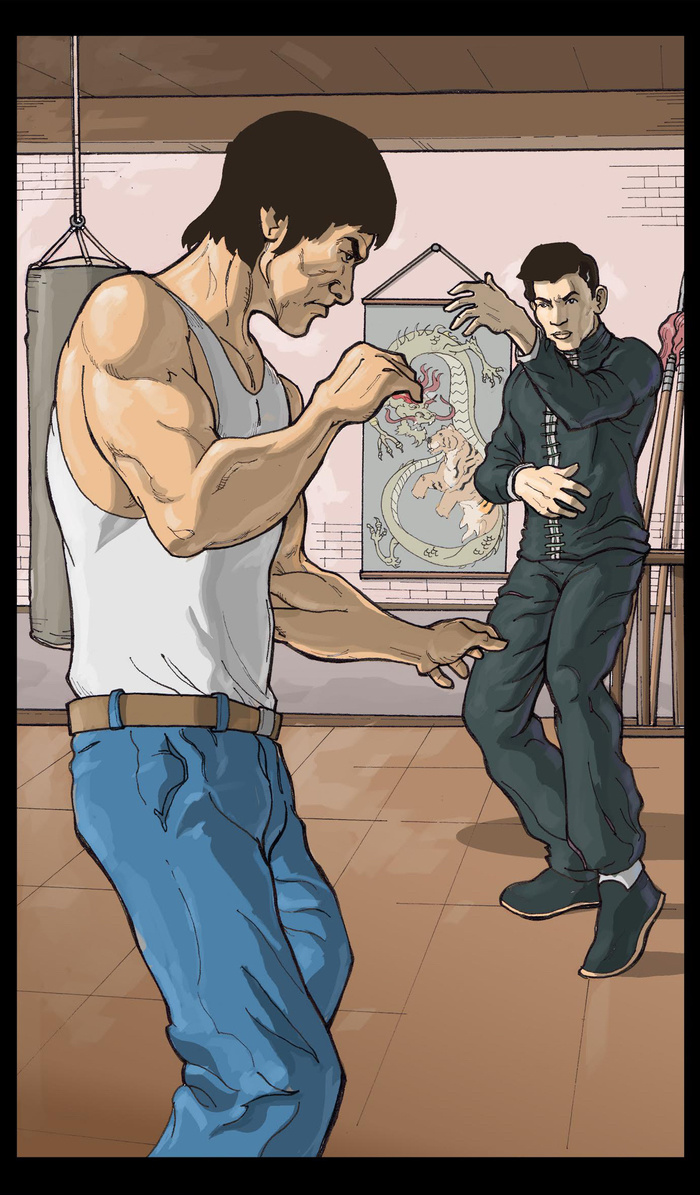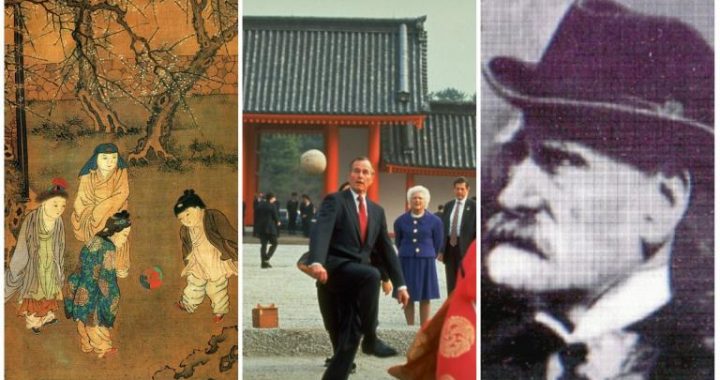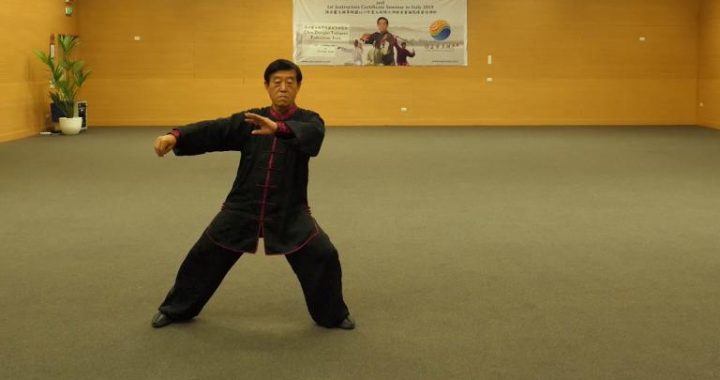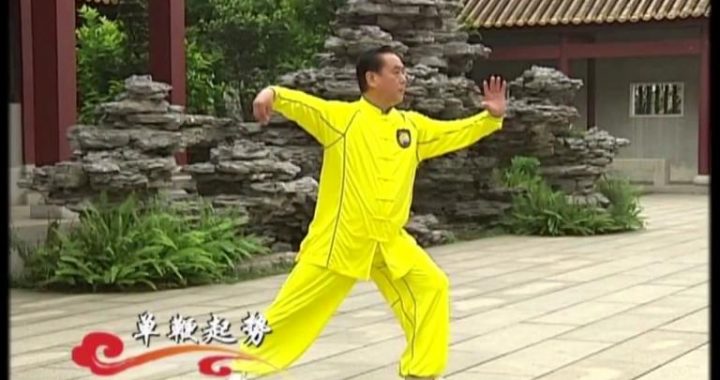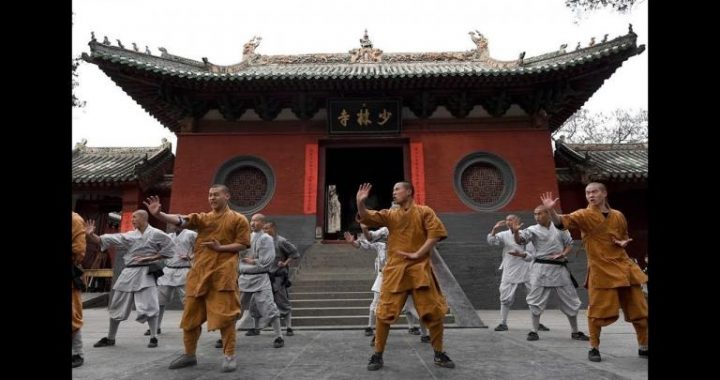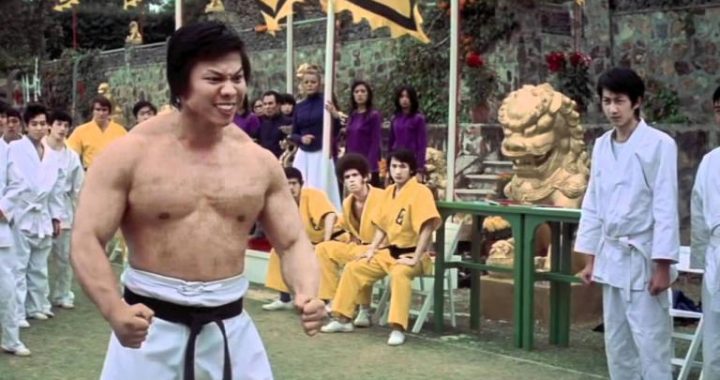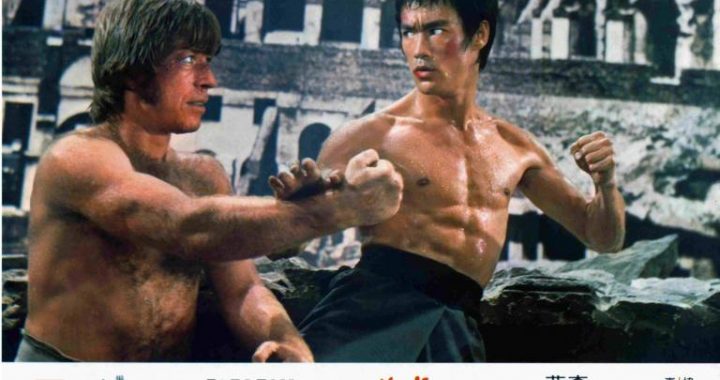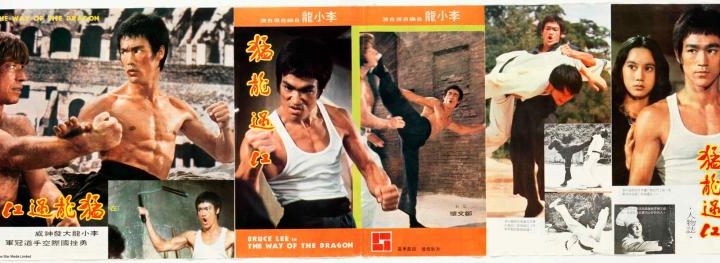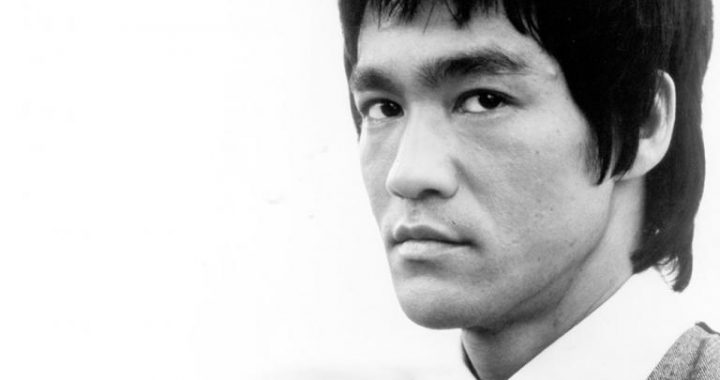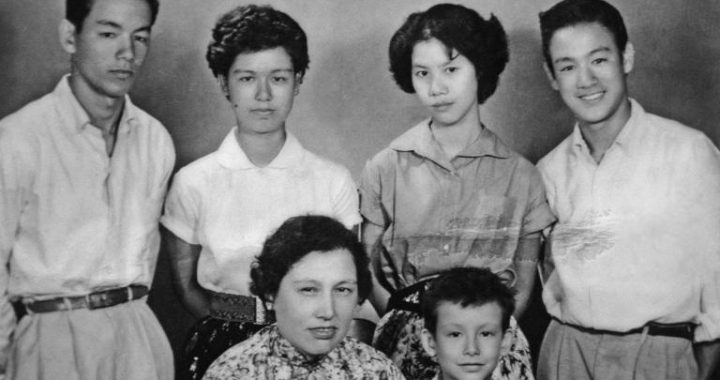Early Years of Bruce Lee
14 min readEarly Years Grace was an attractive girl, the daughter of a Chinese mother and German father. Raised as a Catholic she had come from Shanghai to the British colony of Hong Kong at the age of nineteen. While accompanying her father on his regular visits to the opera she was taken by its comic singer and actor Lee Hoi Cheun and would make sure she always had a seat near the orchestra where he would be able to see her. Her efforts to gain his attention were not in vain. Hoi Cheun and Grace were soon married and took up residence at 218 Nathan Road in the Kowloon district of Hong Kong.
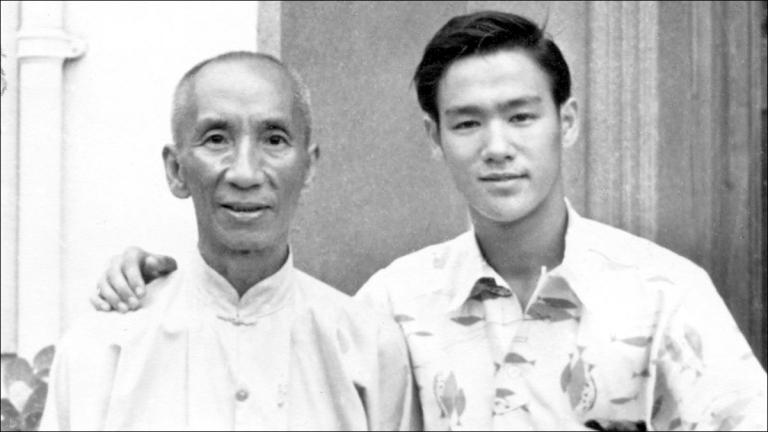
Hong Kong’s Cantonese Opera was more of a music hall than a classical company like the Peking Opera. Although Hoi Cheun wasn’t a great celebrity he had an enthusiastic following that enjoyed his dramatic flourishes and he had done well enough to become the owner and landlord of several apartments. Opium smoking was common among the men and Hoi Cheun was fond of saying that he smoked it ‘because it helps sweeten my singing voice’. Hoi Cheun was also partial to gambling, and so his cronies, as much as his family, enjoyed his company and generosity.
Bruce was the fourth child born to Hoi Cheun and Grace. The Lees’ first child, a son James, had died soon after birth and this had been taken as a bad omen that the spirits were looking on them unkindly and trying to prevent the continuation of the family name. A daughter Phoebe was adopted, after which Grace gave birth to a healthy daughter, Agnes, and a son, Peter. While these children were lodged with relatives in Hong Kong, Grace was accompanying her husband on the Cantonese Opera Company’s tour of the US when she discovered that she was again pregnant. While her husbandcontinued on to New York, Grace stayed in San Francisco.
On 27 November 1940 – according to the Chinese zodiac, the Year of the Dragon – between 6 and 8a.m. – the Hour of the Dragon – at the Jackson Street Hospital in San Francisco’s Chinatown, Grace Lee gave birth to another son. To confuse any potentially unfriendly spirits, the child was given a girl’s name, Sai Fon (Small Phoenix) and one of his ears was pierced. Grace Lee soon renamed her new son Jun Fan (Return Again) because she had an intuition that he would one day return to his birthplace. On her papers, the supervising doctor, Mary Glover, nicknamed the boy Bruce and anglicized his family name to Lee. The name was remembered, although he was never called Bruce by his family until he enrolled in college, when he was twelve years old.
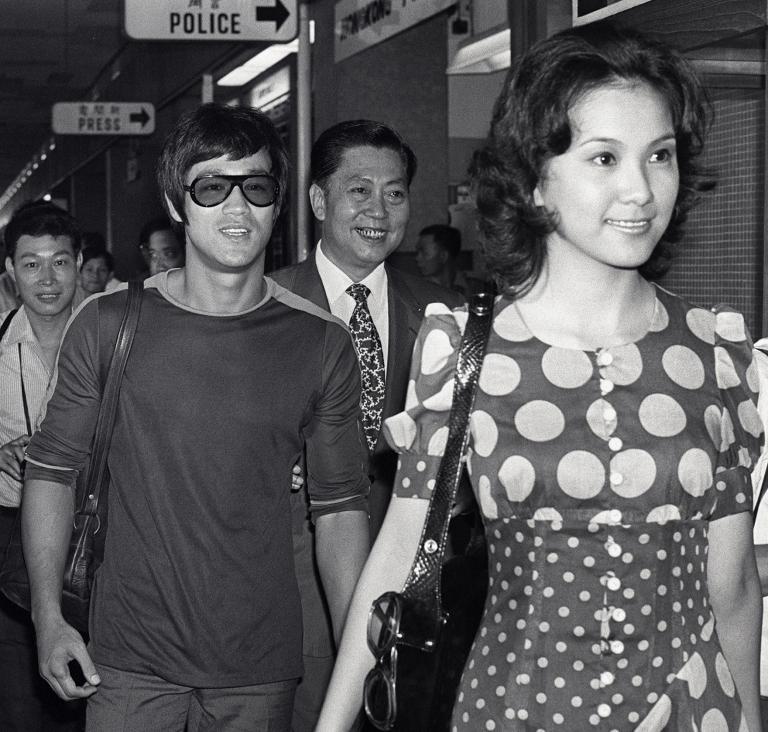
Early in 1941, a few months after Bruce’s birth, the Lee family returned to Hong Kong. The city then was nothing like it is today with its dramatic vistas of steel and glass, Chanel-suited businesswomen and Mercedes limos. This Hong Kong was a seething maze of lanes threading between ramshackle apartment buildings, crowded shops and restaurants where signs projected from every available surface. The lanes were choked with lorries, taxis, pushcarts and rickshaws, all jostling with locals in their traditional suits of long shirts and baggy trousers. Vendors shaded by canopied stalls displayed fruit, fish and rows of shiny hanging ducks. The atmosphere was a complex blend of exotic food and equally exotic rubbish in various stages of decay – a thick stew of smells and an oppressive, muggy heat. The humid conditions soon made baby Bruce ill, and he remained a sickly, skinny child throughout his early years.
The Lees’ apartment on Nathan Road was on the second floor of an old building above some shops. The narrow stairway had no door at street level, so tramps frequently set up home in the entrance. Two sets of strong doors guarded the apartment entrance on the second floor landing, though, the outer doors with thick steel bars and the inner doors containing a peephole. One of Bruce’s most vivid memories of his early years was the occupation of Hong Kong by the Japanese during the Second World War (1939–45). The Lees’ apartment was directly across the street from a Japanese military base and Bruce’s mother later told the story of how she would find her young son leaning precariously over the balcony, raising his fist to the Japanese ‘Zeroes’ circling above.
Inside, the apartment was sparsely furnished. The large main room had arefrigerator at one end, a big table in the middle and a series of beds with simple iron frames and hard mattresses against the walls. Beyond this main room were two smaller rooms; one held two double-deck bunks. The other, overlooking Nathan Road, had a veranda containing numerous potted plants and a caged chicken.
In the unrelenting humidity and heat no bedclothes were needed at night. In the mornings there was a constant queue to use the single bathroom, not that bathing did much good as within minutes one would be covered in sweat again. During times of drought, when the water supply was sporadic, the bathtub was kept filled and the chicken had to share the veranda with a makeshift bathing area set up behind some curtains. When Hoi Cheun’s brother died, his widow and her five children were taken in by the Lee family, as is the Chinese custom. Together with a couple of servants and Wu Ngan, an unofficially adopted child, there were sometimes as many as twenty people crammed into the apartment, along with assorted dogs, birds and fish. Bruce’s favourite dog was an Alsatian named Bobby who slept under his bed.
It would be a mistake to think that Bruce Lee had an underprivileged background. The rent from his father’s properties, along with his income from the opera, meant that the Lees could always afford servants, but despite the fact that his father made good money, Bruce claimed that he never saw any of it. He complained that his father was ‘miserly’ and Bruce sometimes stole money from him to take friends to restaurants. In reality Bruce’s father was not a mean man and was known to have paid medical bills for acquaintances who couldn’t afford them.
Bruce’s father sometimes took him to the theatres where he was working and it was there that he met Siu Kee Lun, better known to his friends as Unicorn, whose father was also an actor in the Chinese Opera. Although Unicorn was three years older than Bruce, the two boys became friends. They would fight and fence with bamboo swords, with Bruce imitating Errol Flynn in Robin Hood. Although Unicorn was older and stronger, Bruce would never admit defeat but would keep on fighting until Unicorn gave up. Bruce spent much of his early life amusing himself in the streets of Hong Kong. In a busy household he wasn’t always missed and his mother generally had to deal with most of the trouble he caused. She paid his school fees every month but would get calls asking why Bruce hadn’t been attending. In the end she told Bruce that it didn’t matter so much if he didn’t like school, buthe had to tell her where he was going so that she knew where he was. ‘Bruce never changed his character,’ said his mother. ‘He repeated the same mistakes time after time. I was disappointed with him again and again. Once I asked how he expected to earn a living if he kept on like that and he said, “I’ll be a famous film star one day.” I scolded him and told him that the life of a famous film star was not as comfortable as he imagined and that their lives were abnormal. I told Bruce, “You can’t even behave like a normal person. How do you expect to become a famous film star?” ’ But Grace Lee also has fond memories of her son. She recalls how she once saw him looking intently from the window of the house at something down in the street. Suddenly he jumped up and ran out the door. When she went to the window she saw Bruce helping a blind man across the street. He told her that he just had to go and help the man who looked so sad and frustrated as everyone walked by ignoring him. It was Bruce’s sister, Agnes, who gave him the name that stuck with him for life: Little Dragon. She recalls that even from an early age Bruce knew he was special and was going to make something of his life. She also remembers him having nightmares and sleepwalking. The rest of the family affectionately called him Mo Si Tung (Never Sits Still). It was the perfect description. If Bruce was still, even for a moment, they thought he was sick. The only time he stopped running, jumping and talking was when he disappeared to a quiet corner and became absorbed in a book. He often stayed up half the night reading. His mother believes that this caused him to become near-sighted and from the age of six Bruce had to wear spectacles. Young Bruce took great delight in playing practical jokes. After starting out with simple gags, like packets of itching powder and electric-shock tricks, his practical jokes became far more sophisticated. On one occasion he rearranged all the furniture in a room to confuse the cleaner. Bruce once told his brother Robert to imagine he was a submarine and look up the sleeve of his jacket as if it were the periscope. As he did so, Bruce fired his depth charge and poured a jug of water down the sleeve, soaking him. Some of his other jokes had an edge to them that wasn’t always funny. Once, after Bruce had pushed his sister Phoebe into the swimming pool, she held his head under water until he promised never to do it again. Bruce never went into a swimming pool again after that.
Bruce Lee had begun his acting career at the age of three months, before his parents left San Francisco, in a film called Golden Gate Girl. He playedthe role of a female baby, carried by his father more as a stage prop than anything else. Although Bruce never took formal acting lessons, with his father’s help and connections he landed his first proper role at the age of six in the Hong Kong-made film The Birth of Mankind. Bruce played a street kid who fights with a shoeshine boy, played by his friend Unicorn. Also when he was six, Bruce played his first role under the name Lee Siu Lung (Lee Little Dragon, the name by which he became known in Asia) appearing with his father in My Son, Ah Chung. Bruce was cast as the cute co-star to the top Cantonese film comic, Chow Shui, and played a streetwise kid trying to survive in Hong Kong’s sweatshops.
Both in tragedies like A Mother’s Tears and comedies such as It’s Father’s Fault, Bruce played street urchins and orphans. Later he was cast in roles playing juvenile delinquents and teenage rebels in films that imitated those being made in the US. There were occasional fight scenes and already Bruce began using some of the gestures that would later become his trademarks: the admonishing finger, the thumb wiped across the nose, the brushing down of the jacket sleeves and the slow-burning gaze. Altogether Bruce appeared as a child actor in around twenty pictures, the best known of which was The Orphan, a film about street gangs, which was made when he was eighteen. It was the only time he played the leading role as a child actor. Besides making these early films, his greatest influence came from the films he enjoyed watching.
Between 1920 and 1949, Chinese filmmaking centred on the Westernized areas of Hong Kong and Shanghai, whose populations were more cosmopolitan than most of China. Even so, it was a highly stylized cinema strongly based on theatrical tradition. In 1949, director Hu Peng decided to make a film about a martial arts master, Wong Fei Hung, who lived between 1847 and 1924. Up until then most martial arts films were savage tales of revenge with ludicrously exaggerated action in which fighters could leap a hundred feet or fly through the air for a hundred yards doing endless somersaults. But both the director and the leading actor of the Wong Fei Hung movies insisted on realistic action scenes and, for the first time, martial arts were at the heart of the film. Apart from being a master of the hung gar style of kung fu, Wong also practised herbal medicine, and the actor who played him had an uncannily similar background. The actor Kwan Tak Hing was, like Bruce Lee’s father, an actor in the Cantonese Opera. He was a wen wu player, which meant that he had to be amartial artist as well as an actor. Like the character he now played, Kwan excelled in hung gar. In addition he knew the Shaolin fighting systems which were based on the movements of various animals. A master of the white crane style, Master Kwan, as he became popularly known, was also a herbal physician and healer.
As this epic series of films progressed – the director went on to make eighty films featuring this character, all played by the same leading actor – Master Kwan became as skilled as the master whose legend he honoured by choreographing superb battles with his main opponent, played by Shih Kien. The young Bruce Lee could hardly have avoided being deeply influenced by these films. During the 1950s and 60s, this series of movies virtually monopolized the market. In 1956, all but four of the year’s twenty-nine kung fu pictures featured Wong Fei Hung. Bruce could recite whole scenes of dialogue from films like How Wong Fei Hung Rescues the Fishmonger, How Wong Fei Hung Saved the Lovelorn Monk From the Ancient Monastery and How Wong Fei Hung Smashed the Flying Dagger Gang. When he was twelve years old, Bruce Lee began attending La Salle College, where most of the students were Chinese Catholics. Although he was in trouble from the start, he was fortunate enough to attract the attention of one of the better teachers, the round-faced, bespectacled Brother Henry Pang. While many of the teachers found Bruce stubborn, wild or lazy, Brother Henry was aware that although Bruce was a difficult pupil he was also very bright, full of potential and needed to be approached differently. Brother Henry channelled what would now be described as Bruce’s ‘attention-deficit hyperactivity disorder’ into running errands, cleaning the blackboards and opening the windows – chores Bruce did willingly. Even so, he found it impossible to sit still in the classroom and was continually in trouble for causing disturbances. At home Bruce spent many hours reading in bed, and his brother Peter recalls that Bruce already had ambitions to become a doctor, though he showed no interest in biology. It would seem that while he was very interested in learning he wasn’t so interested in schooling. In Hong Kong there was a long history of subjugation under colonial rule and the feelings of resentment towards the British were long-standing. The Chinese hated the British almost as much as they hated the Japanese and Bruce soon became the leader of a school gang with strong anti-British sympathies. At the end of a long and tedious school day, frustrations would be directed against the British pupils of the nearby King George V School.Bruce’s gang would gather near the school and heap insults on the British schoolboys walking up the road, or gathered behind the fence in the playing field, until a fight got underway. These fights would continue until one side was beaten or the police arrived. Although the British boys were bigger than the Chinese and won their share of fights, Bruce would never acknowledge defeat or admit that his gang had been beaten fairly.
Phone calls and visits from the police became a regular event in the Lee household and when Bruce’s father came home late from the theatre Bruce would pretend to be asleep and hide under the blankets to avoid punishment. More often than not his mother would simply ‘forget’ to tell his father. To keep out of the way of the police, fights were staged on the flat roofs of apartment buildings, the largest areas of open space to found anywhere in Hong Kong. When a black eye or some other injury made it impossible for Grace to protect Bruce, his father, realizing what was going on, became angry and placed all kinds of restrictions on Bruce’s movements, but he wasn’t home enough to enforce his rulings. After continuing trouble led to Bruce’s expulsion from La Salle, he swept his parents through the headmasters’ offices of a number of schools before finally settling, a little, at the exclusive St Francis Xavier College.
Hong Kong in the 1950s was a place suffering from high unemployment, a depressed economy, overcrowding, homelessness and from people simply taking advantage of each other. Thousands upon thousands of Chinese streamed into the city in order to escape the communist regime on the mainland. With nowhere to go, most of them took to living in parks, on the street, in doorways or in shanties that were little more than sheets of board propped up and lashed together. Some squatted on roofs; some camped in apartment building stairwells. The struggle for survival became fierce and anyone with a job worked long hard hours every day of the year simply in order to eat and carry on working.
Though the British government in Hong Kong provided a state education through elementary school, only those who passed the entrance exam for secondary school went further. Those who failed, which was the majority, were let loose to roam the streets, with few opportunities except bad ones. Restless youths became junior gangsters looking for some excitement and a little cash. They organized themselves into gangs and jealously defended their territory, starting with street fights and ending in all-out gang warfare.Since the British police were not armed and had successfully restricted the use of firearms, most fights were either hand-to-hand fist fights or bloody affairs involving knives and machetes, and many neighbourhood gangs were loosely affiliated to a local kung fu school. Although Bruce was from a well- to-do family and attended an exclusive private school, he still felt drawn to the streets, and he formed his own small gang: the Tigers of Junction Street. William Cheung first met Bruce Lee when an uncle who had friends in the Chinese Opera invited him to attend Bruce’s birthday party. Bruce later heard of Cheung’s growing reputation as a street fighter who practised a formidable style of kung fu known as wing chun and sought him out to learn more. When Bruce came off worse in a gang-related fight he stormed home and demanded to be trained in an effective martial art in order to defend himself against bullies. Although Bruce had been shown some tai chi by his father, the slow flowing movements held little appeal for him. Tai chi is more therapeutic than anything else and needs a great deal of practice before it can be used as an efficient fighting art.
When Grace Lee agreed to give Bruce money for lessons he hunted down William Cheung and asked to train at the same school as him. Only when Bruce persisted did Cheung finally take him to the Restaurant Workers Union Hall on Lee Tat Street, where the classes were held, and introduce him to his master Yip Man. Because Bruce was a celebrity Yip Man was pleased to take him on and he began teaching him on the spot.The thirteen-year-old Bruce Lee took to wing chun with the kind of obsessive enthusiasm that characterized everything he applied himself to. Yip Man’s son, Yip Chun, called Bruce ‘fighting crazy’. At first, Bruce was interested in wing chun only for fighting, but under the instruction of Yip Man he began to absorb some of the finer points of the art that he would eventually embrace to devastating effect.
